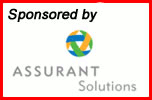July 6, 2005 |

|
ISSN 1550-9214 |
|
Editor's Note: This column by Andrew J. Weill, a California-based attorney, is the latest in a series of contributed editorial columns. Readers interested in authoring future contributed columns can click here to see the Guidelines for Editorial Submissions page. Aftermarket Financial Products:Auto dealers who reinsure their vehicle service contracts are pleased by a recent IRS ruling.By Andrew J. Weill, Esq. & Craig Gordon, Esq. The importance of aftermarket financial products, including service contracts and warranties, has grown enormously over the past few years. Retailers and dealers have discovered that a substantial portion of their profits may be derived from the sale of these products. Nowhere has this truth been shown more than in the automotive industry. Research conducted by the National Automobile Dealers Association determined that greater than 50% of the profits for the average dealership come from aftermarket financial products. And the bulk of these profits are derived from warranties and vehicle service contracts. Furthermore, the delivery of these services to consumers has a strong correlation with consumer satisfaction. The J.D. Power and Associates Customer Service Index Study (CSI) is an industry standard measure for consumer satisfaction. That index shows that when consumers are protected by extended service warranties sold by the dealership, the dealership consistently obtains high CSI marks. Auto dealers have found that there are significant advantages -- both in terms of profitability and customer satisfaction -- by participating in reinsurance programs. How Do Reinsurance Programs Work?Depending on the industry, aftermarket products can work differently with reinsurance programs. In many cases in the automotive industry, for example, a national insurance company offers the vehicle service contracts that, in turn, are offered to consumers. After the consumer purchases the service contract, the insurer then reinsures with another company, which is called a reinsurance company. In the typical automobile dealer program, the reinsurance company is owned by persons affiliated, in some fashion, with the dealership. From the dealership's point of view, the program represents another opportunity for people affiliated with the dealership to share in profits or benefits of aftermarket products. When the product is reinsured, any profit from that reinsurance passes to the owners of the reinsurance company, who are often related to the dealership or its key employees. Equally attractive to the dealership owner, the reserves to satisfy his customers' claims are more directly under his control and supervision. Even if the insurer fails, which has happened, the reinsurance company has assets available to get the repairs made. This extra security is how reinsurance helps to increase CSI. Under the IRS MicroscopeThe reinsurance programs for dealerships' extended vehicle service agreements have been cleared recently by the Internal Revenue Service. The past couple of years were tough on reinsurance programs. Subscribers to these programs saw attacks from the IRS on several fronts as they were swept up in the "tax shelter" craze. Several years ago, a Forbes article by Janet Novack explained how an individual set up an insurance company as a tax exempt entity under the federal tax code and used it to shield millions from taxation. This caused the IRS to target all companies who were claiming an exemption under this section of the federal code. Reinsurance companies were one such group of companies. In fact, programs by many organizations were examined on the theory that they were tax shelters. Recently, however, the IRS appears to have rethought its position on reinsurance companies. At the very end of last year, the IRS published two definitive rulings, also known as Technical Advice Memoranda (TAMs 2004-53012 and 2004-53013) stating that reinsurance programs were not tax shelters. In these rulings, the IRS detailed the comprehensive analysis of both companies and determined that their operation as reinsurance companies was proper. In fact, the rulings demonstrated to the industry that a well-run program is permissible under the most intense scrutiny of the IRS. There were three main issues that the IRS resolved in the recent TAM publications. Perhaps the most important facet of the recent TAM publications is that that IRS now acknowledges that the reinsurance companies established to reinsure the aftermarket product risks of consumers were "insurance companies" under federal tax law. The IRS reached this conclusion after analyzing the contractual relationships among all the parties involved in the transaction and tracking the risks involved. In particular, the IRS recognized that the risk at issue was that of the consumer, which was covered by a national insurance company and then reinsured with a reinsurance company affiliated with the automobile dealer. Because the risk was the consumers', the risk was properly shifted and distributed to meet the qualifications of "insurance" under the IRS code and regulations: The risk of loss[,] which is shifted ultimately to [the reinsurance company] and distributed among the large number of purchasers[,] is an insurance risk and the coverage provided the purchaser is in accord with the commonly accepted sense of insurance. In addition to this precedent-setting determination, the TAM publication also settled the question of whether or not reinsurance companies established for these purposes could elect to be treated as domestic corporations. The answer to this question was an unambiguous "yes". Companies established in offshore locations to avoid the onerous regulations of state insurance commissions were entitled to elect domestic tax treatment under Internal Revenue Code section 953(d). The third main issue dealt with by the TAM publications went to whether or not the operation of these reinsurance programs constituted a sham for federal income tax purposes. The crux of this analysis is the question of "business purpose". If a company engages in a transaction for the sole purpose of avoiding taxes and not for some other valid business purpose, it may be deemed a sham transaction. Unlike a sham transaction, the reinsurance programs were designed to facilitate additional protection for consumers and create additional source of revenue for dealer-related individuals. Notably, the IRS stated in the TAM publications that "[t]he conduct of the parties in this case is different from that of the taxpayer in Wright v. Commissioner, T.C. Memo. 1993-328, 66 T.C.M. (CCH) 214." Wright was the watershed case discussing shams in the reinsurance industry. That the IRS recognizes the bright-line differences between these two situations is pivotal. This shift in the IRS' position was foreshadowed. Over the past year, there has been a steady change in the IRS' treatment of reinsurance companies. They have closed several reinsurance examinations in favor of the taxpayers with reinsurance structures and issued additional rulings in favor of reinsurance companies. The recent TAM publication is a vindication for properly run reinsurance programs in every industry. The most important lesson to take away from this long process is this: the IRS has created a safe harbor for certain reinsurance companies in the industry. Of course, this presumes that these programs are run well and maintained in accordance with IRS regulations. Dealing with an established and tested reinsurance program is the easiest way to achieve compliance while getting the benefits and profits of a reinsurance program. Author's Footnote
| |||||||||||||||||||||||||||||||||||||||||||||||||||||||||||||
| |||||||||||||||||||||||||||||||||||||||||||||||||||||||||||||







